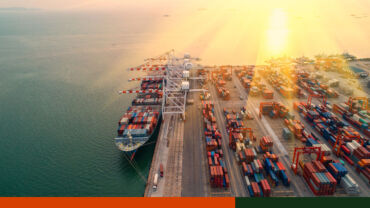For global trade professionals, supply-chain due diligence has become one of the most important ways to mitigate risk, ensure regulatory compliance, engineer resiliency, and prevent brand damage from angry, supply-chain-conscious customers and activists.
But maintaining effective due diligence in a complex supply-chain is no easy task. It takes time, dedication, expertise, and technology—and, done correctly, is an ongoing, ever-evolving practice, not an occasional check-in. Supply-chain due diligence itself is also changing rapidly because the pressure to understand what is happening at every layer and stage of the supply-chain is greater than ever.
A few key factors are driving this trend:
- In June 2022, the U.S. began enforcing the Uyghur Forced Labor Prevention Act, which establishes a rebuttable presumption that the importation of any goods, wares, articles, and merchandise mined, produced, or manufactured wholly or in part in the Xinjiang Uyghur Autonomous Region of the People’s Republic of China, or produced by certain entities, is prohibited by Section 307 of the Tariff Act of 1930, and that such goods, wares, articles, and merchandise are not entitled entry into the U.S.
- Ever-changing sanctions related to the Russia-Ukraine conflict, which require companies to constantly monitor sanctions lists and verify business partners at every tier in the supply chain against the restricted party and/or embargoed-countries lists.
- Growing adoption of Environmental, Social, Governance (ESG) management principles that require companies to manage their supply chains “sustainably” and “responsibly,”, especially in the areas of environmental impact and worker exploitation.
- Ongoing regulatory changes and supply-chain uncertainties related to the pandemic, Brexit, the Russia-Ukraine conflict, logistics challenges, climate change, and the global, integrated nature of modern supply chains.
_____________________________________________________________________________________________
See how organizations are developing strategies to mitigate different forms of supply-chain risk in our free on-demand webinar, Impact of sanctions and export controls on global supply chains.
_____________________________________________________________________________________________
The challenge of visibility
Visibility, transparency, and knowledge are the keys to effective due diligence, but they are also a supply-chain professional’s greatest challenges.
To cite just one example, suppose you have been working with the same Tier 1 supplier for years, and you need to know who that supplier’s sub-suppliers and contractors are. But when you ask, your Tier 1 supplier says they can’t (or won’t) supply that information, it’s possible they simply don’t have all the information you are looking for and aren’t equipped to gather it—but it’s also possible their suppliers aren’t all completely legitimate, and your key supplier is withholding the information out of self-preservation.
The problem is, you need that Tier 1 supplier and have no viable alternative. What do you do?
Unfortunately, even the best-intentioned efforts at responsible due diligence are thwarted like this all the time, for all sorts of reasons. And there is no magic solution. But by following a few key best practices, you can at least get closer to the goal of greater supply-chain transparency.
Getting started on supply-chain due diligence best practices
1—Whatever you ‘can do’ and are doing – make sure you have a documented audit trail to show. Even for trusted traders, low-risk importers and exporters, the government takes a “trust but verify” position and expects policies, procedures and controls to be well documented.
2—Assess your software: To conduct state-of-the-art supply-chain due diligence, especially for a mid- to large-size company, it’s essential to have the right technological tools and personnel who are trained to use them. But these tools, while important, don’t necessarily need to be obtained all at once.
For example, small companies with relatively simple supply-chains can search free government websites for denied parties and sanctions lists that might apply. Manual searching is tedious and time-consuming, and quickly becomes unsustainable with more than a small number of suppliers.
Likewise, if your company already has an ERP, it may not be necessary to invest in separate Denied Party Screening (DPS) software, because it is technically possible (though not trivial) to integrate DPS data into an ERP. Or, depending on your ERP, separate modules that can help with screening, compliance, import/export management, sourcing, and other supply-chain tools can be added individually as needed.
3—Develop your tools: The advantage of a task-specific tool for denied party screening, trade-lane analyzing, or other areas of supply-chain management, is that such tools provide a much more robust array of capabilities around a single task.
For example, a good third-party screening tool not only screens for restricted entities, sanctions, politically exposed persons (PEPs), and adverse media, the lists it scans are automatically updated, the data is cleaner (and therefore more reliable), the risk variables are configurable, and the alert systems are more accurate.
Whatever tools are being used, however, the point of having them is to gather as much supply-chain data as possible, so that when a risk factor arises—e.g., evidence of child labor, an impending natural disaster—you have the knowledge and capacity to pivot quickly and employ alternative options.
Short, medium, and long-term goals
No matter where your company is on the technology curve, it is still possible to strengthen due-diligence capabilities by pursuing short, medium, and long-term strategies simultaneously.
- Short-term: Make sure any new partners/suppliers are aligned with your company’s goals. Ask about their controls, procedures, and precautions—and don’t sign any new business agreements without adequate due diligence upfront. Expectations about labor, environmental measures, etc., should be included in the contract.
- Medium-term: As an ongoing practice, continue reviewing and investigating current suppliers to locate knowledge gaps and potential risk factors. Stay informed about automated software that can serve your company’s needs best, and work toward acquiring it. This may require persuading senior management that the rationale for acquiring new technology makes sense—but if there ever were a time when senior leaders were inclined to listen to global trade professionals, it is now.
- Long-term: No matter what, it is important to find ways to gain chain visibility beyond Tier 1 suppliers, and that can take time. It helps to develop better relationships with vendors in order to build trust. If vendors trust you, they are more likely to respond to requests for supply-chain information.
Ensure supply-chain due diligence through automation
Supply-chain due diligence should be an ongoing, steadily improving process, so any efforts toward improvement will likely be steps in the right direction, whatever that happens to be for your organization. Click here for a free 30-day trial.








